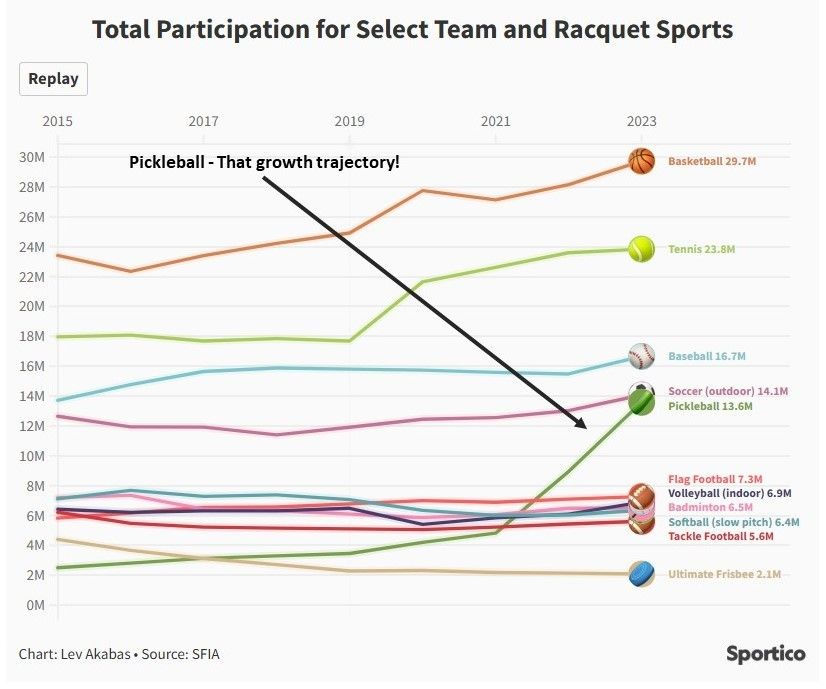What's the Deal with Pickleball?
- Jinal Sanghavi
- Jun 28
- 2 min read
Updated: Aug 14
In Nov 2024, Swiggy bought World Pickleball League's Mumbai team. Many of my friends have also started playing the sport in the last month. Pickleball is among the fastest-growing sports globally. Every few days I hear of new courts set up or tennis and badminton courts being repurposed. I didn’t expect pickleball would have this type of growth and staying power. So, I wondered what's the deal with this sport anyway?
First, let's explore 𝘄𝗵𝘆 𝗽𝗶𝗰𝗸𝗹𝗲𝗯𝗮𝗹𝗹 𝗶𝘁𝘀𝗲𝗹𝗳 𝗲𝘅𝗽𝗹𝗼𝗱𝗲𝗱 𝗶𝗻 𝗽𝗼𝗽𝘂𝗹𝗮𝗿𝗶𝘁𝘆.

Now, pickleball is not a new sport. Pickleball was actually created in 1965 by US congressman Joel Pritchard to pass time in his backyard on a game that could be played by his whole family. By 2003, there were just 39 known permanent places to play pickleball in North America. However, by 2008, there were over 420 registered locations, a 10x increase in five years, and an early signal of the explosion to come. Another 10 years, and by 2018 there were over 7,000+ known pickleball sites. After a relatively slow growth during COVID, in 2022-23, the sport exploded in popularity and nearly doubled its participation with an annual growth rate of 85.7%. It was one the top trending Google searches globally. This popularity trickled down world over across 84 countries, including India. According to recent data, the popularity of pickleball in India has skyrocketed with a remarkable 159 𝑝𝑒𝑟𝑐𝑒𝑛𝑡 𝑖𝑛𝑐𝑟𝑒𝑎𝑠𝑒 in the number of players from 2019 to 2023!
The speed of pickleball’s adoption can be attributed to the familiarity it has to existing user knowledge and infrastructure. When you see it the first time, you liken it to tennis, ping pong, or other racket sports. The rules are largely similar to something you already know and the mechanics are intuitive. Importantly, pickleball can be played on a variety of existing surfaces both indoors and outdoors. It also coincided with the post pandemic preferences for reduced engagement in high contact team sports like football, basketball, etc.

Second, I wanted to check if any of the external factors are likely to 𝘀𝘂𝘀𝘁𝗮𝗶𝗻 𝗽𝗶𝗰𝗸𝗹𝗲𝗯𝗮𝗹𝗹'𝘀 𝗽𝗼𝗽𝘂𝗹𝗮𝗿𝗶𝘁𝘆.

The sport's gentle, low-impact quality makes it an attractive choice for those seeking an enjoyable way to stay physically active without intense physical demands and high skilling requirements. It has a social element, with 4 to 6 members easily able to rotate within a game, which also enables a cultural movement and has high social media presence. Perhaps because it came out of nowhere, it became a trendy sport for everyone with few public comparison points amongst professional champions and hence very well suited for casual and social people. Then, the growing trend of pickleball has also sparked the growth of several clubs that organise tournaments and give coaching programs. My bet is that this all is going to help sustain the sport's popularity for the near future.



Comments